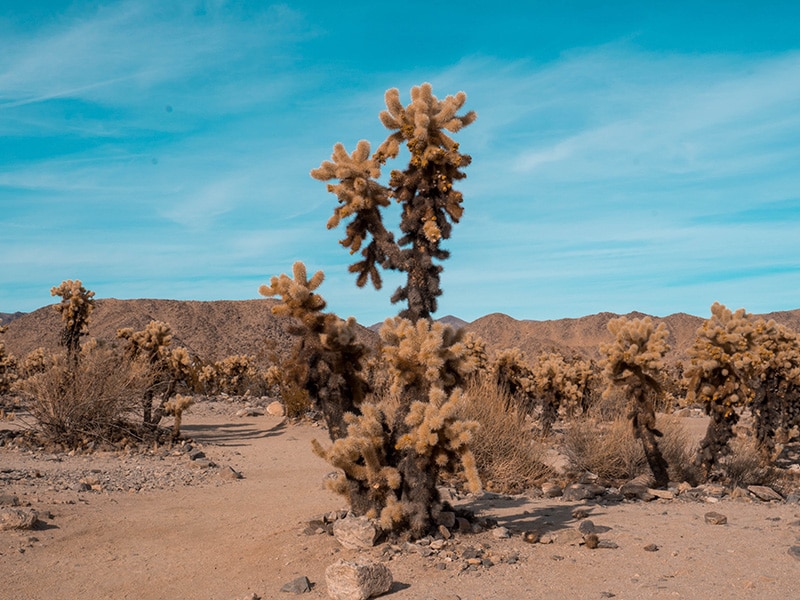
“Lower Pima Canyon was famous for jumping cholla, which was the reason most people avoided it. A jumping cholla consisted of connected cones which create long arms. Each cone had thousands of needles, and when they prick a victim, the cone breaks off. Many victims claimed they didn’t touch the cactus, but it jumped at them, hence its name. In any event, they weren’t to be trifled with, and I felt anxious as I followed Asa.”
The jumping cholla received its nickname because if you get too close…a segment just might break off and fly at your body.
Yes, a flying cactus!

Does the Jumping Cholla Cactus Really Jump?
By now, you must have heard of the cactus named Jumping Cholla and the myth that this cactus can jump. The legend started out with people swearing that they think that the cactus really jumped on them when they got stung by it. However, the cactus does not really jump. This myth of jumping cacti is not valid, not even the Teddy Bear Cholla, one of the Jumping Cholla varieties. The name teddy bear is given because the cactus looks fuzzy, soft, and cuddly. Moreover, they look brilliant under the sunlight of Arizona. Still, once you’ve experienced the sting of one, you’ll know to keep at least three feet of distance between the two of you so that you do not have to experience that pain anymore.
Although the cholla cacti do not really jump, one thing is for sure, they can be very painful when they latch on to you. They are known as jumping cactus because they have a segmented joint attachment that is very loose. The joints then will attach to the helpless passersby as they brush slightly over the cactus. No matter how slight, they will give a good sting. That is the reason why many people think that the cactus jump. People simply do not even feel the small brush, but they surely scream over the pain.
There are different variations of the cholla cacti. Some of them are greener than others, and some of them have a slight hint of gold. They can also bear fruit, but these fruits are not edible, unlike the fruit of the prickly pear cactus. The fruits of jumping cholla do not even ripe over time. They will remain attached to the plant for months or until the following fruit and flower are developing on the old fruit’s top. Some of the fruits will even be attached for a year long.
The loose joints are both a self-defense mechanism to discourage anything from getting too close and a means of reproduction. The easily detachable segments travel with animals and people alike when they become attached. If they become dislodged and fall to the ground, then they may take root and grow! However, when the joints do not root, then they will die. It is actually quite common to see both dead and sprouted joints in the mature jumping cholla’s proximity. The jumping cholla can usually grow to five inches long, and the diameter could be four inches. So the cactus is actually a medium size cactus. They are possibly the most fearsome medium-sized cacti available.
